


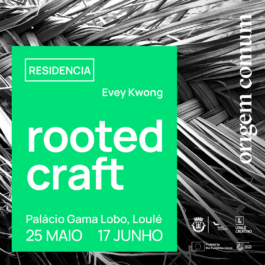
ROOTED CRAFT explores rural crafts with a new approach to weaving techniques that were once a thriving economic activity for agricultural and transportation of goods, as well as for domestic use. With the scarcity of natural resources and environmental awareness, artisanal production is resurgent, recovering ancestral technologies. The resulting products and research answer the demand for more ecological consumption choices. With that in mind, this project looks to form new hybrid understandings of weaving and facilitating local and international exchange to open new possibilities for new applications and design strategies. As a result of these rich archives, they will be integrated into the ‘Situated Practices’ exhibition.
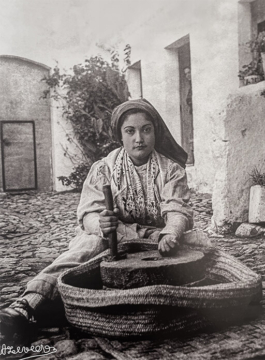
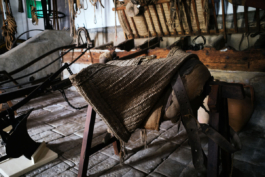
Left: Judite do Vale a moer milho. Foto Cruz Azevedo, 1938, Alte Aqui.
Right: Empreita was used in agriculture and transportation of goods, as well as for domestic use.
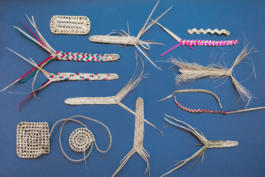
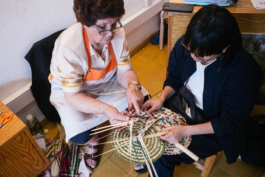
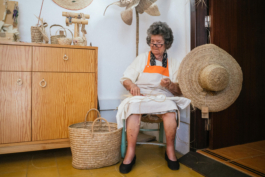
Loulé local weaving archetypes of dwarf palm leaves.
Casa da Empreita
•
Traditionally, Loulé is a land of palm weavers – women who dedicate themselves to the technique of weaving the leaves from the dwarf palm tree, abundant in the region. In the past, the work was necessary to pack dried fruits for export and where they appeared, and in the second half of the century, the first wholesalers for the resale of handcrafted items.² Nowadays, this is no longer the case, and this extraordinary craft is disappearing. To counter the situation, the Loulé Municipal Council set up a palm weaving shop (Casa da Empreita) in 2017. Made up of a collective of 12 craftswomen who work and sell what they produce, the shop is part of the workshops of the Loulé Criativo project, which aims to promote and support arts and crafts on the verge of extinction. Casa da Empreita recreates, in modern times, what, about a century ago, were the palm weaving shops, which existed throughout the Algarve, and where Loulé stood out for its importance.³
During the residency, together with the weavers of Casa da Empreita, we archived the palm weaving archetypes, which was an important move to document and preserve the local techniques.

A woven miniature basket from Museu Regional do Algarve.
The material, usage, and processing
•
Before the advent of plastics, baskets were used and made principally, if not exclusively, with perishable materials such as palm leaves. The argument about dwarf palm leaves being more environmentally friendly is half the truth, as the traditional techniques* of preparing the materials are seldom challenged and scrutinised. Here is not to generalise the practice of the entire Mediterranean region.
Due to the fierce globalisation and market shift, many weavers were forced to adapt to the new demand: tourism. Tourism might be a demand, but it is a trap for a mass-consumption purpose (fast basketry), which will still lead to a continuous loss of value.
There is certainly potential to rethink the material use and processing of the palms in order to protect the environment and its treaters.
* Note: Traditionally, the best fibres are subjected to a treatment process with smoke from the burning of sulphur, being placed in a damp closed place, where a stone of sulphur is burned. The use of sulphur smoke serves to remove the top layer of the leaf, allowing, on the one hand, the surface to become whiter, but also porous, to receive dyeing. This treatment also imparts flexibility to the fibres. Alternatively, there are more sustainable ways for whitening the fibres by drying them in the shade.
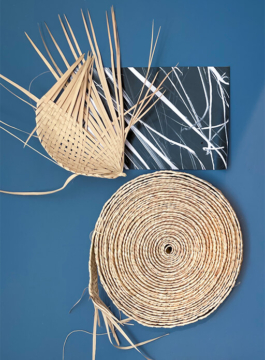
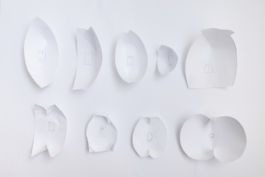
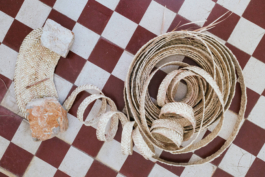
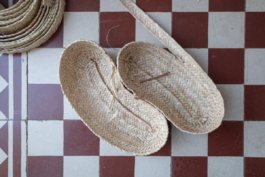
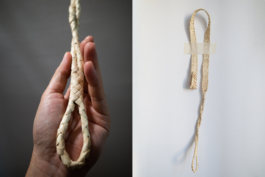
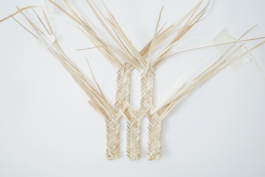
The interweaving of knowledge between East and West
•
In many (sub)tropical continents in the world, and tropical cultures I explored – Borneo, palm leaves of different lengths and widths define different techniques. If one may make a distinction with dwarf palm leaves due to their leaf length, the technique of dwarf palm leaves can be seen as limiting, but often overlooked and under-scrutinized.
In the tropical context, palm leaves of local species are woven as one piece as a whole artifact, whereas with dwarf palm leaves, techniques have already been thought through with creating a continuous weave (empreita) to compensate for the short leaf length.
However, this does not mean the dwarf palm has fewer advantages than the other. Weaving with empreita means understanding the weaving engineering, the flow from A to B. This so-called limitation could be interesting because stitching and many other unheard-of techniques could be incorporated.
For example, it could be interesting to look into non-traditional forms other than oval, rounded, and horizontally stitched forms. My proposal investigates and intervenes with the traditional forms and techniques by exploring new ways of folding, ending, and joining the elements.
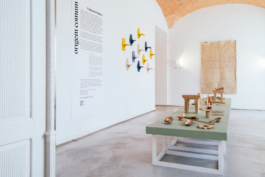
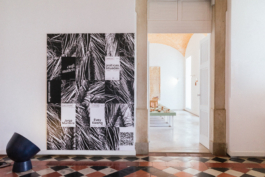
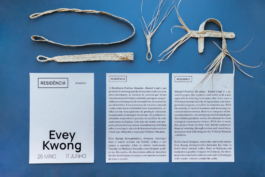
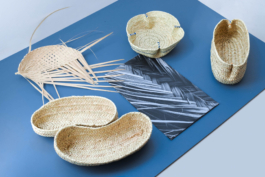
On the loss of material value
•
Adjacent to the problematic value of the material, a solution is proposed for research and cooperative work between weavers and designers over time, as well as important initiatives and policymakers, whose role could facilitate research projects on sustainable strategies to rethink the material use.
Continuity in creation for the material would mean looking into the big picture of things by reimagining new needs and potential ways to look into interdisciplinary and bioregional practices. From construction materials to fabrics, and from plant-based shoes to molded components, all of the experimental objects resulting from investigation and extensive collaboration are included.
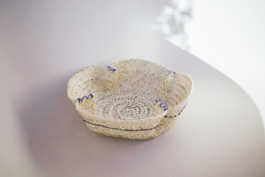
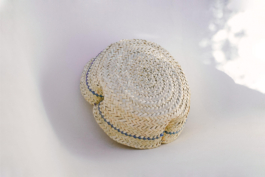
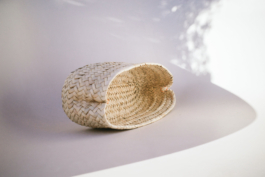

A design collaboration with Loulé weavers.
Many thanks to the weavers:
Valentina Silva, Almerinda Miguel, Sónia Mendez, Margarida Cortez, Maria Olimpia, Alzira Neves, Cremilde Lourenço, Eugénia Calico.
Special thanks to Teresa Mascarenhas from Loulé Criativo, Vanessa Flórido from Projecto Tasa, Kathi Sterzig, and Álbio Nascimento from Origem Comum.
Bibliography:
[1][2] Facts extracted from Programa Saber Fazer
[3] Facts extracted from the Loulé Criativo brochure
All images by Evey Kwong

ROOTED CRAFT explores rural crafts with a new approach to weaving techniques that were once a thriving economic activity for agricultural and transportation of goods, as well as for domestic use. With the scarcity of natural resources and environmental awareness, artisanal production is resurgent, recovering ancestral technologies. The resulting products and research answer the demand for more ecological consumption choices. With that in mind, this project looks to form new hybrid understandings of weaving and facilitating local and international exchange to open new possibilities for new applications and design strategies. As a result of these rich archives, they will be integrated into the ‘Situated Practices’ exhibition.


Top: Judite do Vale a moer milho. Foto Cruz Azevedo, 1938, Alte Aqui.
Bottom: Empreita was used in agricultural and transportation of goods, as well as for domestic use.



Loulé local weaving archetypes of dwarf palm leaves.
Casa da Empreita
•
Traditionally, Loulé is a land of palm weavers – women who dedicate themselves to the technique of weaving the leaves from the dwarf palm tree, abundant in the region. In the past, the work was necessary to pack dried fruits for export and where they appeared, and in the second half of the century, the first wholesalers for the resale of handcrafted items.² Nowadays, this is no longer the case, and this extraordinary craft is disappearing. To counter the situation, the Loulé Municipal Council set up a palm weaving shop (Casa da Empreita) in 2017. Made up of a collective of 12 craftswomen who work and sell what they produce, the shop is part of the workshops of the Loulé Criativo project, which aims to promote and support arts and crafts on the verge of extinction. Casa da Empreita recreates, in modern times, what, about a century ago, were the palm weaving shops, which existed throughout the Algarve, and where Loulé stood out for its importance.³
During the residency, together with the weavers of Casa da Empreita, we archived the palm weaving archetypes, which was an important move to document and preserve the local techniques.

A woven miniature basket from Museu Regional do Algarve.
The material, usage, and processing
•
Before the advent of plastics, baskets were used and made principally, if not exclusively, with perishable materials such as palm leaves. The argument about dwarf palm leaves being more environmentally friendly is half the truth, as the traditional techniques* of preparing the materials are seldom challenged and scrutinised. Here is not to generalise the practice of the entire Mediterranean region.
Due to the fierce globalisation and market shift, many weavers were forced to adapt to the new demand: tourism. Tourism might be a demand, but it is a trap for a mass-consumption purpose (fast basketry), which will still lead to a continuous loss of value.
There is certainly potential to rethink the material use and processing of the palms in order to protect the environment and its treaters.
* Note: Traditionally, the best fibres are subjected to a treatment process with smoke from the burning of sulphur, being placed in a damp closed place, where a stone of sulphur is burned. The use of sulphur smoke serves to remove the top layer of the leaf, allowing, on the one hand, the surface to become whiter, but also porous, to receive dyeing. This treatment also imparts flexibility to the fibres. Alternatively, there are more sustainable ways for whitening the fibres by drying them in the shade.






The interweaving of knowledge between East and West
•
In many (sub)tropical continents in the world, and tropical cultures I explored – Borneo, palm leaves of different lengths and widths define different techniques. If one may make a distinction with dwarf palm leaves due to their leaf length, the technique of dwarf palm leaves can be seen as limiting, but often overlooked and under-scrutinized.
In the tropical context, palm leaves of local species are woven as one piece as a whole artifact, whereas with dwarf palm leaves, techniques have already been thought through with creating a continuous weave (empreita) to compensate for the short leaf length.
However, this does not mean the dwarf palm has fewer advantages than the other. Weaving with empreita means understanding the weaving engineering, the flow from A to B. This so-called limitation could be interesting because stitching and many other unheard-of techniques could be incorporated.
For example, it could be interesting to look into non-traditional forms other than oval, rounded, and horizontally stitched forms. My proposal investigates and intervenes with the traditional forms and techniques by exploring new ways of folding, ending, and joining the elements.




On the loss of material value
•
Adjacent to the problematic value of the material, a solution is proposed for research and cooperative work between weavers and designers over time, as well as important initiatives and policymakers, whose role could facilitate research projects on sustainable strategies to rethink the material use.
Continuity in creation for the material would mean looking into the big picture of things by reimagining new needs and potential ways to look into interdisciplinary and bioregional practices. From construction materials to fabrics, and from plant-based shoes to molded components, all of the experimental objects resulting from investigation and extensive collaboration are included.




A design collaboration with Loulé weavers.
Many thanks to the weavers:
Valentina Silva, Almerinda Miguel, Sónia Mendez, Margarida Cortez, Maria Olimpia, Alzira Neves, Cremilde Lourenço, Eugénia Calico.
Special thanks to Teresa Mascarenhas from Loulé Criativo, Vanessa Flórido from Projecto Tasa, Kathi Sterzig, and Álbio Nascimento from Origem Comum.
Bibliography:
[1][2] Facts extracted from Programa Saber Fazer
[3] Facts extracted from Loulé Criativo brochure